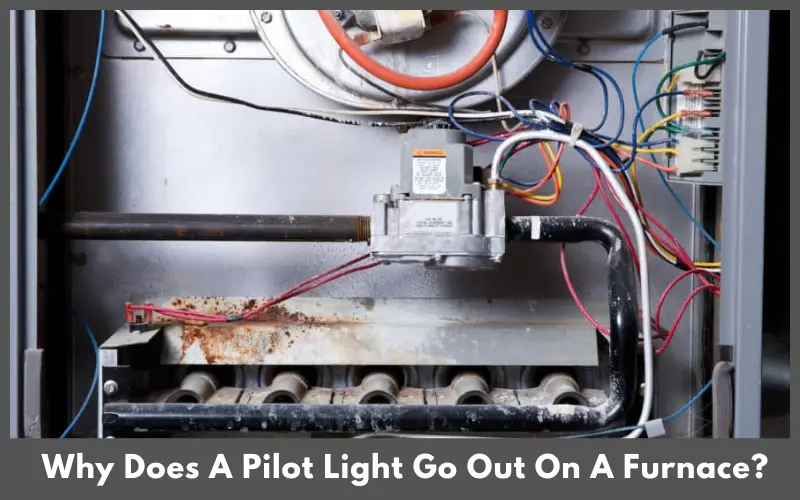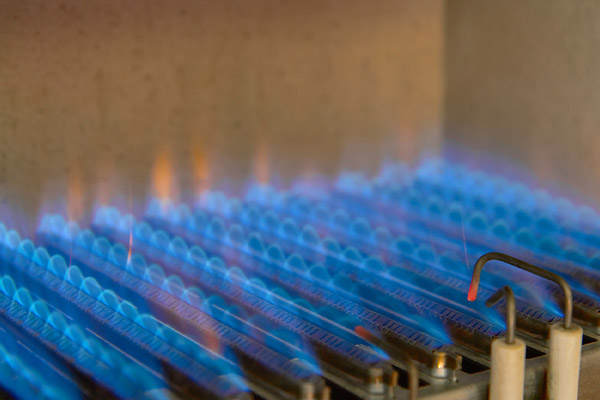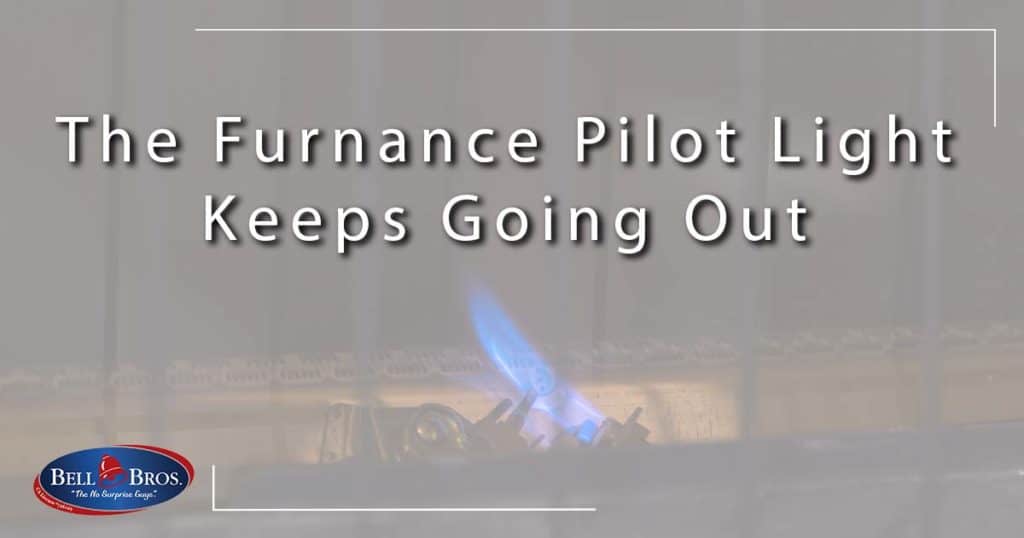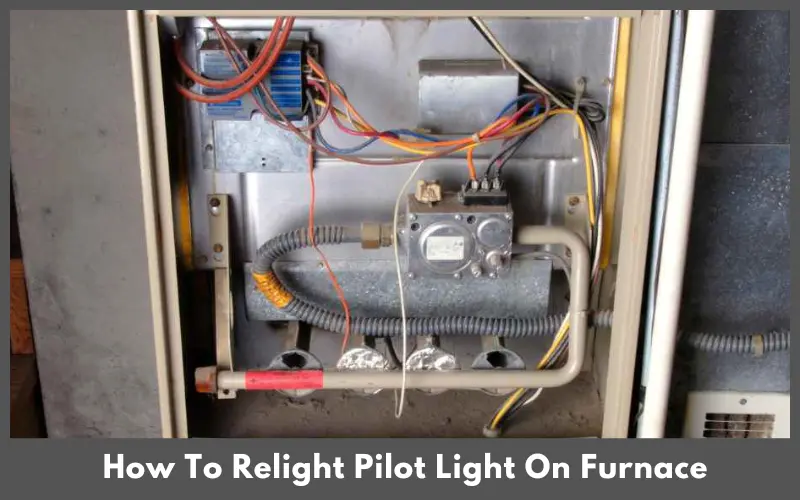Why Does A Pilot Light Go Out On Furnace

The persistent problem of a furnace pilot light extinguishing itself can be a major headache, especially during peak heating season. Understanding the reasons behind this issue is crucial for aspiring HVAC technicians, seasoned professionals, and even homeowners looking to troubleshoot minor problems. This article dives deep into the common causes of a pilot light going out, preventative measures, and how this knowledge connects to a successful HVAC career.
The Anatomy of a Pilot Light and Why It Matters
The pilot light is a small, continuous flame that ignites the main burners in a gas furnace. It's a safety mechanism, ensuring that gas isn't released into your home without a means of ignition. Without a functioning pilot light, the furnace won't heat your home, potentially leading to discomfort and even frozen pipes in colder climates.
From a career perspective, mastering the diagnosis and repair of pilot light issues is a fundamental skill for any HVAC technician. It's a common service call, especially during the initial cold snaps of winter. According to the Bureau of Labor Statistics, the median annual wage for HVAC technicians and installers was $51,390 in May 2021. However, skilled technicians with expertise in gas furnace repair, including pilot light troubleshooting, can command higher salaries. Payscale.com reports that experienced HVAC technicians can earn upwards of $70,000 annually, depending on location, experience, and certifications.
Common Culprits: Why Your Pilot Light Keeps Going Out
Several factors can contribute to a pilot light repeatedly extinguishing. Here's a breakdown of the most frequent causes:
1. Dirty or Clogged Pilot Orifice
The pilot orifice is a small opening that supplies gas to the pilot light. Over time, dust, debris, and corrosion can accumulate, restricting gas flow and causing the flame to weaken and eventually go out. This is one of the most common issues technicians encounter. Cleaning the orifice is a relatively straightforward task, but it requires precision and care. Improper cleaning can damage the orifice and lead to further problems.
2. Faulty Thermocouple or Flame Sensor
The thermocouple or flame sensor is a safety device that detects the presence of the pilot light flame. If the flame is detected, the thermocouple sends a signal to the gas valve to keep it open, allowing gas to flow to the main burners. If the thermocouple is faulty, it may not detect the flame, even if it's present, and the gas valve will shut off, extinguishing the pilot light. This is another very common problem, often requiring replacement of the thermocouple. Technicians often carry a variety of thermocouple sizes to handle different furnace models.
3. Drafts
A strong draft can easily blow out the pilot light, especially in older furnaces with less shielded pilot light assemblies. Drafts can originate from leaky windows or doors, open chimneys, or even the furnace blower itself. Identifying and eliminating drafts is crucial for maintaining a stable pilot light. Checking for drafts is often the first step in troubleshooting pilot light issues.
4. Gas Supply Issues
Insufficient gas pressure or a problem with the gas supply can also cause the pilot light to go out. This could be due to a problem with the gas meter, a closed gas valve, or even a leak in the gas line. Addressing gas supply issues requires specialized knowledge and equipment and should always be handled by a qualified HVAC technician.
5. Dirty Flame Sensor/Thermocouple
Even if the thermocouple is not completely faulty, a dirty surface can prevent proper electrical conductivity and lead to the flame sensor not detecting the pilot light. A simple cleaning can often resolve this issue. Using fine-grit sandpaper or a specialized flame sensor cleaner is recommended.
6. Insufficient Gas Pressure
Low gas pressure can starve the pilot light of fuel, causing it to sputter and extinguish. This can be caused by issues with the gas regulator or a problem with the gas supply to the house. Diagnosing and resolving gas pressure issues requires specialized equipment and knowledge and should always be performed by a qualified professional.
7. Blocked Flue
A blocked flue can create backdrafts, which can extinguish the pilot light. Blockages can be caused by bird nests, debris, or even snow and ice accumulation. Clearing the flue is essential for proper furnace operation and safety.
Preventative Measures and Maintenance
Regular furnace maintenance is key to preventing pilot light problems and ensuring the longevity of your heating system. Here are some preventative measures you can take:
- Schedule annual furnace inspections: A qualified HVAC technician can inspect and clean your furnace, identify potential problems, and ensure that all components are functioning properly.
- Replace the air filter regularly: A dirty air filter restricts airflow, which can put stress on the furnace and contribute to pilot light problems.
- Keep the area around the furnace clean and free of debris: Dust and debris can accumulate on the pilot orifice and other components, leading to malfunctions.
- Seal drafts around windows and doors: Reducing drafts will help prevent the pilot light from being blown out.
The HVAC Career Path: From Pilot Lights to Powerhouse
Mastering pilot light troubleshooting is just the beginning of a rewarding career in HVAC. The industry offers diverse opportunities, from residential service and installation to commercial and industrial HVAC systems. Here's how understanding pilot light issues can contribute to career advancement:
- Building a Strong Foundation: Pilot light diagnosis requires understanding of basic HVAC principles, gas systems, and safety procedures. These fundamentals are crucial for tackling more complex HVAC problems.
- Gaining Customer Trust: Successfully resolving a customer's pilot light problem builds trust and rapport, leading to repeat business and referrals.
- Specialization and Certification: With experience, technicians can specialize in areas such as gas furnace repair, energy efficiency, or building automation. Certifications like NATE (North American Technician Excellence) demonstrate competence and enhance career prospects. EPA Section 608 certification is also mandatory for technicians who handle refrigerants.
Consider Sarah, a recent HVAC graduate. She started her career by focusing on residential service calls, including pilot light issues. Her attention to detail and commitment to customer satisfaction quickly earned her a reputation as a reliable technician. After a few years, Sarah pursued NATE certification and specialized in high-efficiency furnace systems. Today, she's a lead technician at a large HVAC company, earning a comfortable salary and mentoring junior technicians.
The Employer's Perspective: Hiring Skilled Technicians
For HVAC companies, hiring skilled technicians who can efficiently diagnose and repair pilot light problems is essential for providing quality service and maintaining customer satisfaction. Employers look for candidates with:
- Technical Skills: A strong understanding of HVAC principles, gas systems, and electrical circuits.
- Problem-Solving Abilities: The ability to diagnose and troubleshoot pilot light issues effectively.
- Customer Service Skills: The ability to communicate clearly with customers and provide excellent service.
- Certifications: NATE, EPA 608, and other relevant certifications demonstrate competence and professionalism.
Investing in employee training and development is crucial for HVAC companies. Providing technicians with opportunities to enhance their skills and obtain certifications can improve service quality, reduce callbacks, and boost employee morale. Many companies offer apprenticeship programs and tuition reimbursement to help employees advance their careers.
The Future of HVAC: Embracing Technology and Efficiency
The HVAC industry is constantly evolving, with new technologies and regulations emerging regularly. Technicians need to stay up-to-date on the latest advancements, such as smart thermostats, high-efficiency furnaces, and renewable energy systems. Understanding how these technologies impact pilot light systems and overall furnace operation is crucial for providing cutting-edge service. Furthermore, the increasing focus on energy efficiency is driving demand for technicians who can optimize furnace performance and reduce energy consumption.
In conclusion, while a seemingly simple issue, understanding why a pilot light goes out on a furnace is a microcosm of the knowledge, skill, and dedication required for a successful HVAC career. From basic troubleshooting to advanced system diagnostics, mastering this fundamental skill is a stepping stone to a rewarding and in-demand profession.










